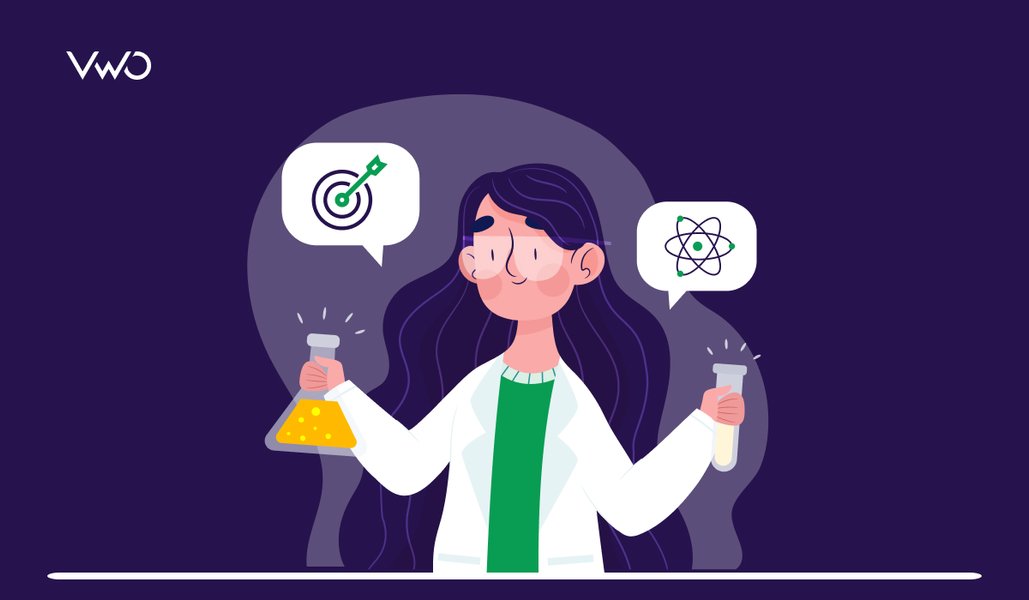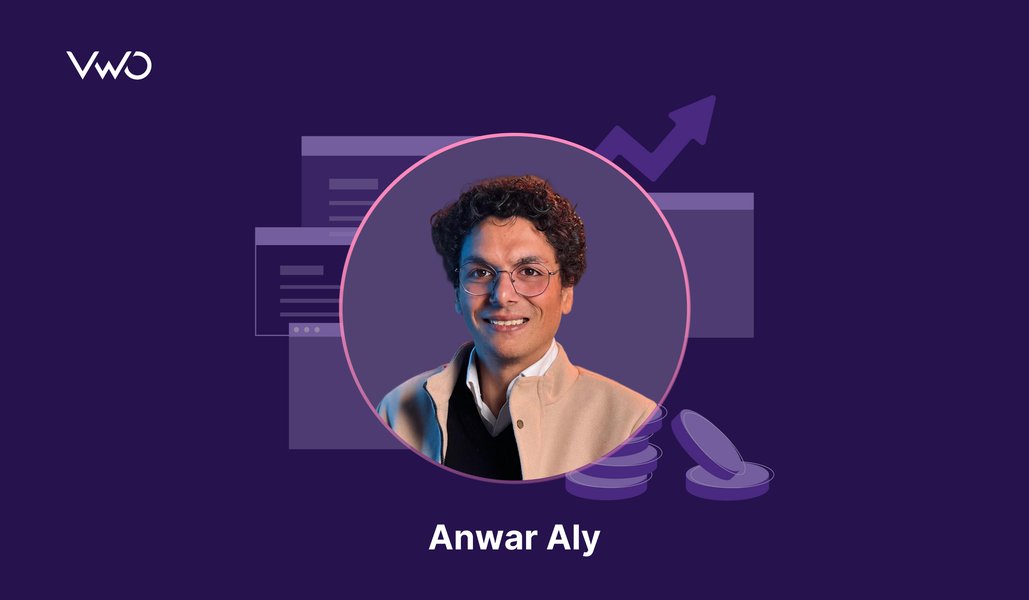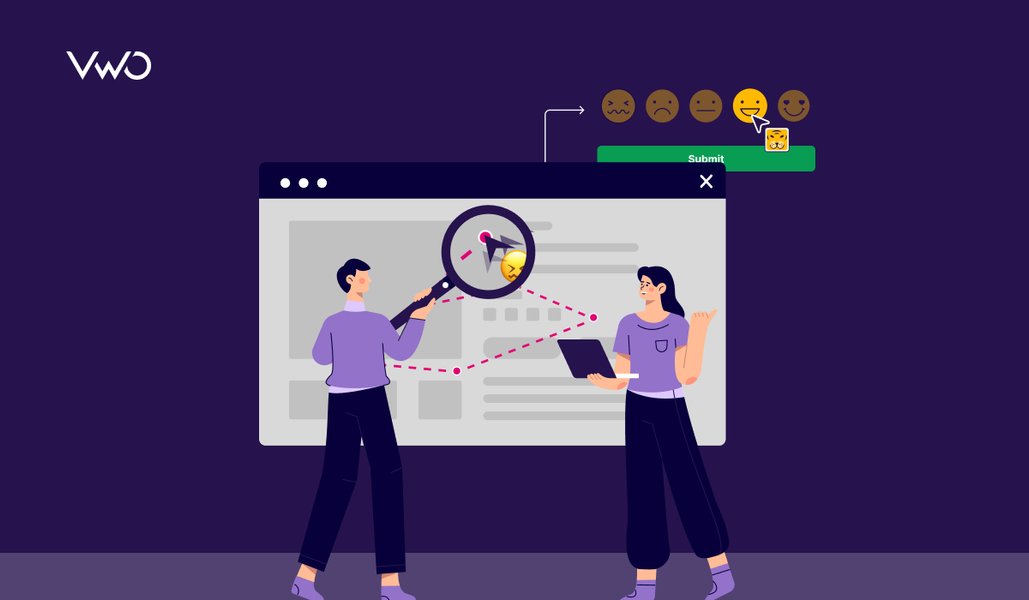5 Conversion Rate Optimization Challenges For Enterprises To Solve
Although the interest in conversion rate optimization is increasing over time, organizations are unable to adopt it fully. To ensure its smooth adoption and implementation, certain challenges and misconceptions need to be addressed.
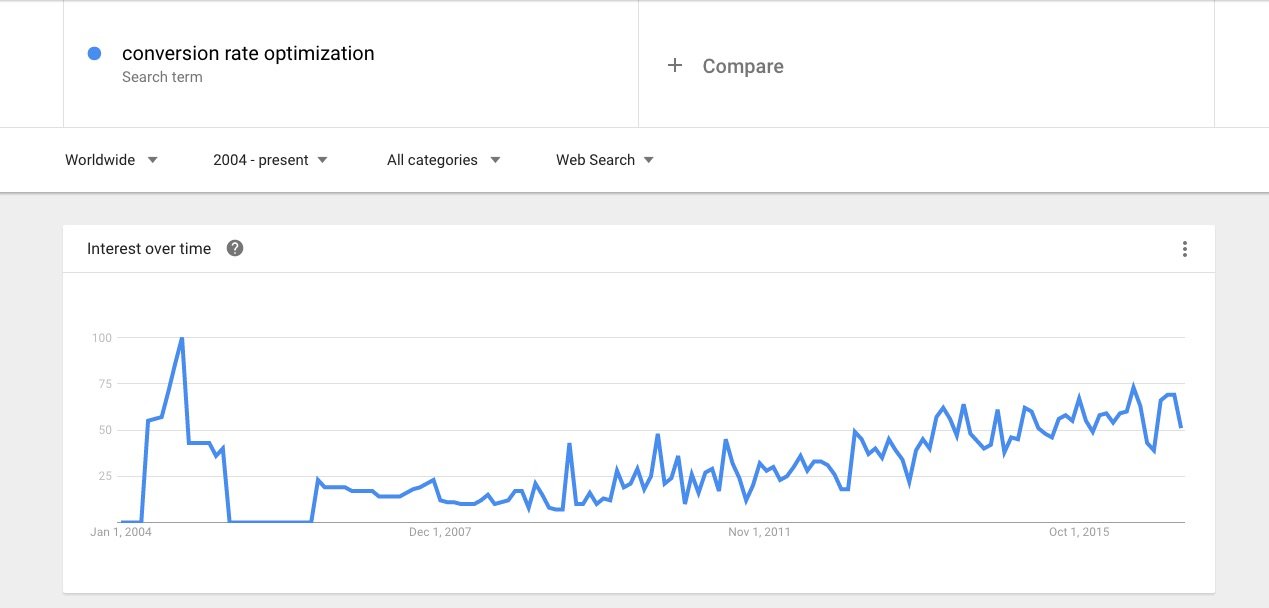
Download Free: Conversion Rate Optimization Guide
In this post, we will talk about 5 such conversion optimization challenges that enterprises face and ways to overcome them.
Challenge 1. Politics and People—A Cultural Challenge
An organization’s culture is made of 2 core components—people (skill and mindset) and their interpersonal relationships (power to influence and politics). Creating a conversion optimization culture becomes challenging when either people lack the understanding and skill or when influential people in the organization want their opinions to be valued more than what data and facts indicate.
Political
Brian Massey, Founder, of Conversion Sciences shares his view on the political challenge as follows:

Brian Massey
Why has Donald Trump’s top-down, opinion-driven leadership style been accepted by the white-collar working public in the US? Because enterprise businesses have trained us that this is how leadership works. We have a name for this leadership style: “HiPPO,” or Highest Paid Person’s Opinion. Joel Harvey calls it Helicopter Management. This is the management style of charismatic or autocratic leaders who drive action in their organizations by helicoptering in, expressing a lightly informed opinion, and enforcing their opinion in one of the following two ways:
* They bestow the budget upon the loyal.
* They threaten the jobs of the disloyal.
So marketing teams can grab the budget and buy the latest tools. But they then struggle to find the man-hours necessary to make the tools effective.
Like all big business problems, it’s a cultural issue.”
James Spittal, Chief Executive Officer, of Web Marketing ROI also talks about the HiPPO effect and the political challenge that obstructs a culture of conversion rate optimization.

James Spittal
Only a small portion of changes are A/B tested, kind of like the “HiPPO” effect. The typically small and under-resourced internal CRO team madly tries to work with an agency to get as many A/B tests launched as possible and keeps up their A/B test velocity while talking to everyone about CRO. Meanwhile, a C-level executive asks for a change to be pushed straight into the source code base without it being tested, costing the organization potentially millions of dollars because they don’t know any better.
Keith Hagen, VP & Director of Conversion Services at Inflow views politics as an obstacle in the implementation of quality insights for any CRO program.

Keith Hagen
Not all insights are equal. One insight can be worth millions; the other may not move the needle at all while the enterprise pays its employees to test and implement that insight as well.
Terming what an insight actually is, is important as well. Insights come from customers and identify a customer obstacle or opportunity. If you are not making something better for the customer or capitalizing better on what you have, it should not be worked on. Enterprise organizations have a lot of voices, and the higher-paid voices tend to influence what optimizations are made to a site.
The solution he proposes is to score Insights Based on Their Potential.
Every insight should be scored on its potential and shared across the organization. Whether the insight is about an obstacle to purchase or an opportunity to sell more, the potential should be assigned a dollar value so that it is clear what NOT working on the insight will cost.
People
James Spittal, Chief Executive Officer, Web Marketing ROI attributes the lack of skill—technical or development—with regard to why people in an organization pose a challenge to creating a culture of CRO.
James Spittal
This challenge simply occurs because people in an enterprise not having the knowledge, talent, or skills. Often, we see people with a graphic design, pure web design, pure analytics, or pure UX background become the “de facto” CRO team. But they struggle because it’s unlikely that they have the technical skills or development skills to be able to implement advanced A/B test ideas (major layout changes, modals, segmentation, changing cart flows, doing tests on pricing, etc.). Often, they also struggle to get resources internally or externally and build a strong business case to increase the CRO budget.
Johann Van Tonder, COO, of AWA Digital, shares similar views regarding people and the lack of talent to implement conversion optimization.

Johann Van Tonder
The challenge is to find good optimization talent. While there is no shortage of people marketing themselves as CRO practitioners, only a small percentage of the candidates we screen make it into our organization. This is the same pool that enterprises are recruiting from.
A good optimizer is both analytical and creative, with a solid grasp of disciplines as diverse as psychology, copywriting, marketing, and statistics. They are brilliant communicators with an entrepreneurial drive and at least basic coding skills. Finding them is not easy.
Solution
The first step in creating a culture of data-driven conversion optimization in any organization is to educate the people about its benefits. Any enterprise planning to implement such a shift—moving from random A/B testing to scientific conversion optimization—must first understand the “why” behind it.
Any cultural change requires the complete support of the top management. That’s why it is all the more important to convince it about conversion optimization. Here’s how you can use data to convince your top management about why they need conversion optimization:
- Highlight improved user experience as a double win.
- Present a competitive analysis.
- Stress the gaps in your current approach.
- Show the money.
- Show the data.
Challenge 2. No Defined Structure that Supports CRO
It’s a huge challenge for enterprises to put together a structure that supports conversion optimization effectively. There are a number of questions that arise when addressing this challenge. Would it be beneficial to hire a dedicated conversion optimization team, or would it mean only additional expenditure? Who is responsible for conversion optimization?
With regard to this challenge, some interesting observations were listed in ConversionXL’s report on the State of Conversion Optimization in 2016. One of the findings quoted in the report mentions, “…only 29% of people said that there’s a single dedicated person who does optimization. 30% more said there’s a team in charge of optimization, but 41% of respondents had no one, in particular, that was accountable for optimization efforts.”
Some companies have internal conversion optimization teams that comprise an analyst, designers, marketers, and project managers. However, should these people invest all of their time in conversion optimization? One way of dealing with this is to have all team members allocate time between core job functions and conversion optimization.
Another challenge related to the lack of a structured process for conversion optimization, as explained by Tim Ash, CEO of SiteTuners, and a digital marketing keynote speaker, is the isolation of the CRO team from the rest of the teams.

Tim Ash
The biggest problem that an enterprise CRO faces is the siloing emblematic of big companies. All job functions and even departments are compartmentalized and do not communicate well with each other. So even though a CRO group or team exists within the company, it is only able to focus on limited tactical objectives and simple split URL testing. Typically, CRO initiatives pass through compliance and approval reviews, get watered down by the branding gatekeepers, and then languish in the IT development queue to get implemented.
At SiteTuners, we have developed our Conversion Maturity Model to grade organizations on key aspects of their optimization effectiveness. Dimensions include culture and processes, organizational structure and skill set, measurement and accountability, the marketing technology stack, and of course the user experience across all channels.
One of the biggest determiners of success is whether there is active and consistent support for CROs from high-ranking executives. If there is political air cover and the CRO team reports high up in the company, this team can work across the silos to tackle fundamental business issues involving products and services, the business model, back-end operational efficiencies, and fundamental user experience redesigns.
Solution
Lay down a clear process for conversion optimization that needs to be followed by everyone in the organization. Create a dashboard or platform where all the conversion optimization activities are planned, updated, and reported. Share this platform with everyone in the organization. Encourage a culture where everyone contributes to conversion optimization. However, make decisions based only on data. For example, while deciding what to test and optimize, follow a scientific hypotheses prioritization framework. The benefit—though everyone gets to share their observations and hypotheses—is that only the most relevant of those are tested.
Download Free: Conversion Rate Optimization Guide
Challenge 3. Inefficient Methodology for Implementing Conversion Optimization
Paul Rouke, Founder and CEO, of PRWD points out that lack of user research is one problem in the current conversion optimization methodology followed by most enterprises.

Paul Rouke
Among enterprises, a lack of an intelligent and robust optimization methodology is a major barrier to them making experimentation a trusted and valued part of their growth strategy. Lack of user research in developing test hypotheses, alongside lack of innovative and strategic testing, instead a focus on simple A/B testing, are some of the biggest barriers which prevent enterprises from harnessing the potential strategic impact conversion optimization could have for their business.
As shown below, the interest in A/B testing is far more widespread than in conversion optimization.
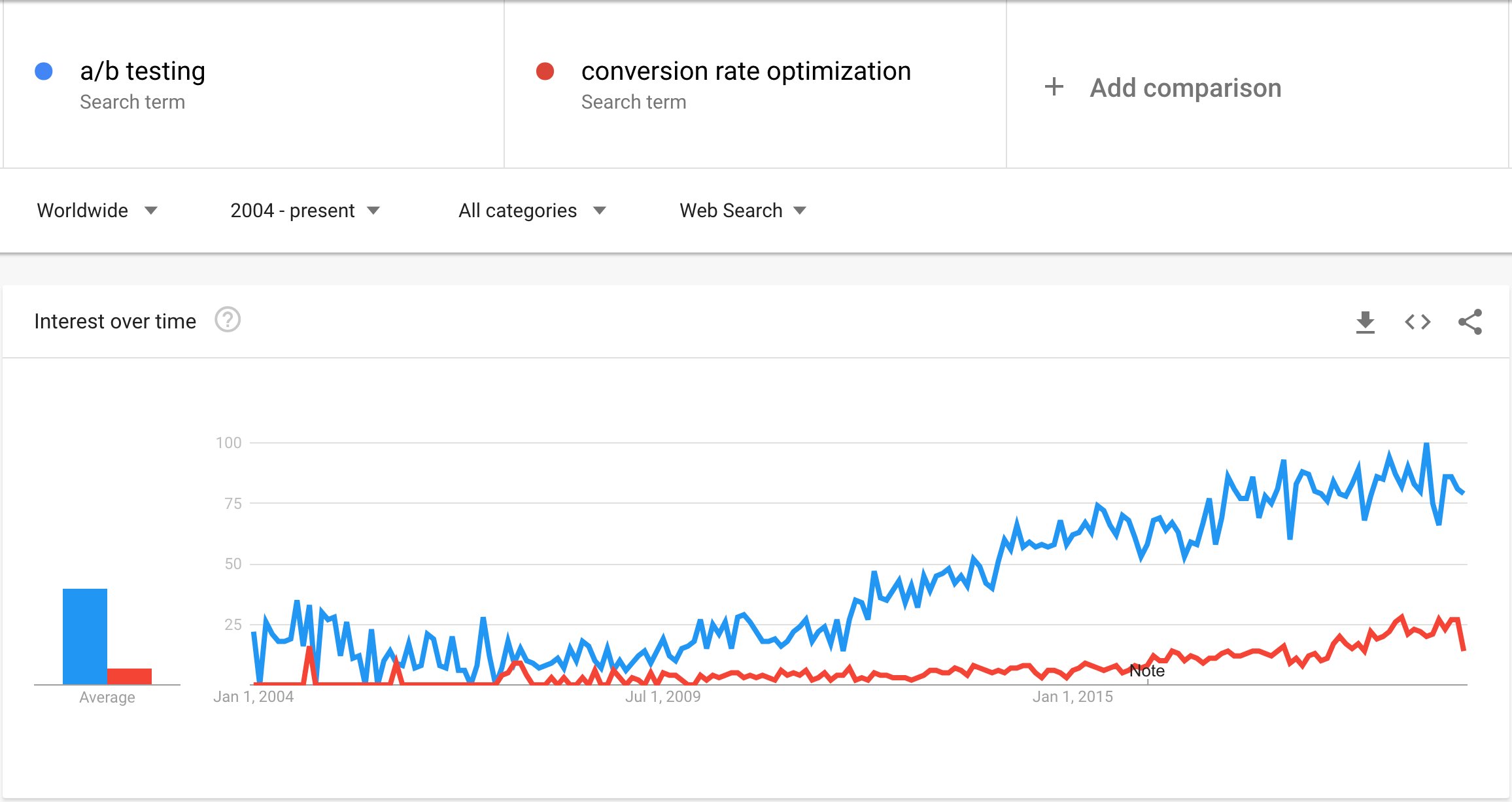
It is important to understand that testing random ideas based on opinions is not a smart way of testing. You may get a winning variation even by testing “ideas,” but this will not help solve the real pain points that users face. The challenge, therefore, is to eliminate guesswork; and the solution is to focus on data instead.
Here’s what Brian Massey has to say regarding eliminating guesswork and relying on a behavioral data-based methodology.
Brian Massey
Enterprises are missing out on an area, that is, following Moore’s Law in terms of increasing capability and decreasing costs. Behavioral data collection is dropping precipitously in price, and new capabilities are coming online weekly. Just as Microsoft didn’t realize that the mobile phone market would follow Moore’s Law, enterprises run the risk of missing the growth in Behavioral Science, a discipline designed to eliminate guessing from business strategy and tactics.
Mathilde Boyer, Head of CXO, House of Kaizen, and Peter Figueredo, Founding Partner, House of Kaizen also talk about what is inefficient about the current conversion optimization methodology, as followed by some enterprises.
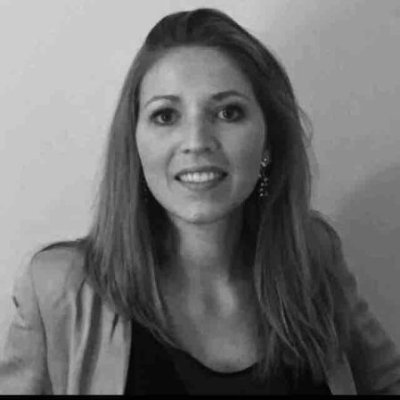
Mathilde Boyer
Opinion-based A/B testing is the gangrene of CRO programs. It hinders the process of objective creation and prioritization of test hypotheses. This tendency can lead to situations where a high level of resources is invested in low-impact optimization activities. Generation and prioritization of test hypotheses need to be data-driven, systematic, repeatable, and teachable to allow for the expansion of optimization activities across a business.

Peter Figueredo
Companies who invest in CRO typically rush to get testing started and overlook the importance of conducting research. Without proper research for informed testing, the design process CXO has lower chances of success. If your doctors do not know the root cause of your ailment, then they are likely only treating the symptoms but not curing the disease. Research should never be ignored and should be a critical component of House of Kaizen’s CXO success.
Solution
Data-driven optimization is focused on identifying friction, understanding the why behind user behavior, and testing hypotheses based on that data/information. Here’s what a formalized conversion optimization methodology would comprise:
- Researching the existing data
- Finding gaps in the conversion funnel
- Planning and developing testable hypotheses
- Creating test variations and executing those tests
- Analyzing the tests and using the analysis in subsequent tests
Andre Morys, CEO of Web Arts, in one of his interviews, talks about what’s wrong with the methodology. According to him, 80–90% of big companies do not aim for bigger goals, which could change the growth rate. This is another methodology-related drawback, as the goals being set do not take profitability into account. Andre’s interview answers many other questions related to business growth.
Challenge 4. Right Tool for Meeting Business Goals
The decision-makers in an organization have a variety of tools to choose from for meeting their business goals. For example, when deciding on an A/B testing tool, they have to make a choice between a:
- Frequentist-based statistical engine
- Bayesian statistical engine
Moreover, there are multiple tools that help accomplish specific objectives. Enterprises might use hotjar for heatmap reports, a/b testing from VWO, and some other tool for on-page surveys. Reporting becomes a pain when instead of using one connected platform, enterprises use multiple tools to execute their conversion optimization program. If enterprises instead switch to a single connected platform, they can save a lot of time and resources.
Another problem with not using a single tool for testing and optimization is that it becomes difficult to explain instances of success and failure to the top management. This could be confusing for managers who are not in touch with the day-to-day implementation of the conversion optimization program.
Solution
For selecting the correct tool, decision-makers need to weigh the pros and cons of their actions. They need to evaluate the tool based on how effectively and efficiently it can solve their specific business problems. For enterprises looking to invest in a tool for business growth, here’s a post on what decision-makers need to know before investing in CRO or A/B testing software.
Challenge 5. Insufficient and Incorrect Budget Allocation
Back in 2013, most companies spent less than 5% on conversion optimization from their total marketing budget.
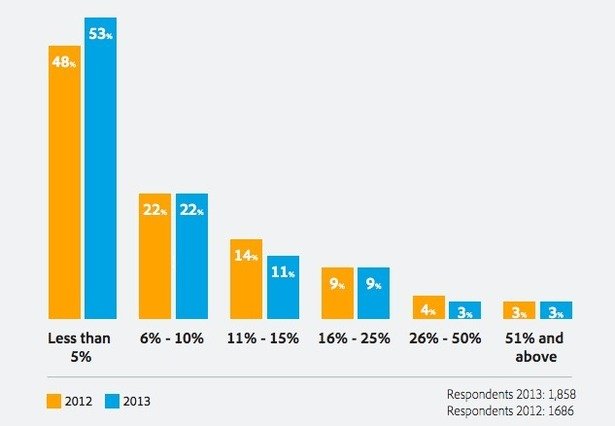
Moving on to 2014, a report from Adobe says that top-converting companies spend more than 5% of their budgets on optimization. Per the conversion optimization report 2016 by ConversionXL, businesses have increased their spending on optimization. The problem, however, lies in correct allocation.
Paul Rouke talks about inefficient budget allocation as follows:
Budgets for conversion optimization within enterprises are continuing to increase, but typically in the wrong direction. Enterprises focus far too much of their marketing investment in enterprise technology. As a result, there’s little investment in people and their skills to actually harness the technology—whether building their in-house team or harnessing specialist agencies.
Enterprises that invest in Human Intelligence (HI), above and beyond technology, and AI are the ones who are positioning themselves for significant and sustainable growth. Growth is about people.
Solution
Before deciding the amount that enterprises should spend on conversion optimization, they should think about the return on investment from CRO. Organizations need to budget for the conversion optimization tool while analyzing their goals and actual gains. To read more on how to budget for conversion optimization, read this post by Formstack.
Summary
Although the interest in conversion optimization is growing, due to certain challenges, it is not being adopted fully by enterprises. Some of the drawbacks that this post talks about are related to organizational culture, structure, methods and processes, tools for conversion optimization, and budget. These challenges are either related to the adoption of conversion optimization or its smooth implementation. Solving these can help enterprises deploy conversion optimization efficiently and effectively to achieve growth and success.
Hope you found this post insightful. We’d love to hear your thoughts on the challenges that enterprises face when implementing conversion optimization. Send in your feedback and views to marketing@vwo.com




